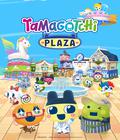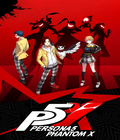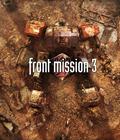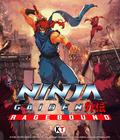A little over two years ago, the Nintendo Switch got Shantae, a game that was originally printed in such low numbers on the original Game Boy Color that it fetched a high price on the used market until that version arrived on the Nintendo 3DS eShop — until it recently closed. Not only did this give Switch owners the ability to legitimately play that first title in the series, but it also meant that the Switch was the only platform where you could essentially play all of the games released so far in the series. It took an unusually long time, but that original game has finally made it beyond the Switch by landing on the PlayStation 4 and PlayStation 5.
You play the role of Shantae, a half-genie hired to be the guardian genie of Scuttle Town. One morning, she wakes up after a cannonball hits her house and quickly runs into town to warn the inhabitants. She finds that the pirate crew is led by the notorious pirate Risky Boots, and while Shantae manages to drive them away, the pirates end up stealing an experimental Steam Engine that can be used to help them rule the seas. Vowing to get it back, she goes off on a mission to recover the four elemental stones needed to power said engine.
If you're familiar with the later games in the series, you may be taken aback by the story here not because of the plot but because of the delivery. The later games in the series have their characters fully fleshed out and full of very humorous situations. Here, the only characters to get any sort of personality are Shantae, with Risky Boots coming in at a very distant second. The humor that's usually present is also missing, so you've got a story that's more by the book when compared to later iterations.
The opening level provides a nice rundown of the basics. Shantae can walk or get into a sprint in a side-scrolling atmosphere while using her hair to whip enemies. She has a health system to let her take a few attacks before losing a life, and she can collect coins from enemies that drop them. The game features no timer to make you hurry through a level, but there is a persistent day and night cycle that occurs, and nighttime makes the enemies tougher. Get to the end of the level, and you get a boss fight that occurs in two stages.
Beating the boss allows the game to venture into Metroidvania territory, where the journey through the different environments has you frequently going back and forth between them. The town visits become the more important part of these journeys, as this is where the game gives you almost all of your abilities. Health power-ups give you an increase to the number of hearts, and limited-use weapons can also be purchased. New moves, like a drill kick and elbow smash, can also be learned, but the most important techniques and ones that have become a signature for the series are the dance transformations. You have to play a mini game to learn the techniques and execute them in levels, but they're all necessary to open up the game beyond basic platforming. For example, transforming into an elephant lets you smash previously unbreakable obstacles, while turning into a monkey lets you climb up walls that you can't otherwise jump over.
The marriage of transformations, basic platforming and combat add the gameplay variety that is expected from the genre. The fact that this was originally developed for a portable platform doesn't handicap the game's length, as it'll take roughly eight hours to get through the campaign without going for 100%, something that's considered an average length nowadays. The game does have save points, but those who want more flexibility can take advantage of the emulator-like save system to create their own spots. You're limited to three such save states before having to overwrite them, though.
With all of that said, there are some design decisions that hold back the game a bit. For a game that styles itself as a Metroidvania, there's no in-game map to consult. The argument could be made that it takes more inspiration from Castlevania II: Simon's Quest, especially with the day and night cycle, but that isn't too positive when you consider how clunky that game is. Falling into pits causes you to lose a full life instead of just taking a health hit, like it does in later games. The zoomed-in camera means that you'll see more of Shantae, but that results in limited visibility for the environment. Also, while the default control scheme feels comfortable, it would've been nice to see some customization options for those who really want the original Game Boy Color layout, so A is jump and B is attack instead of vice versa.
This is a port of one of the later Game Boy Color games, but with that in mind, it is good to see how well the presentation holds up. The zoomed-in camera may be bothersome from a gameplay perspective, but it shows off a surprising amount of detail for what is essentially an 8-bit game. The character animations are fluid, especially the transitions from day to night and back again, as well as seeing Shantae move into buildings during the town exploration phases. The sound effects are classic 8-bit material, while the soundtrack pushes the technology of the time to produce some very rich themes in every area. The only blemish is the presence of an audible pop whenever a new musical track is being played, something that was also present but not fixed in the Switch version.
Keen-eyed players will notice that there are two iterations of the game included: the original Game Boy Color release and one that is enhanced for the Game Boy Advance. Graphically, the GBA version has brighter colors, but everything else remains the same, so don't expect drastic changes. Gameplay-wise, you can buy a spell that transforms you into a Tinkerbat, which makes the game easier since you can fly. Thanks to this major difference, both the GBC and GBA iterations are treated as two separate games with their own natural save and quick save files, so you have to be conscious of what you want if you plan on trying to beat the game.
The two-year stretch between this release and the one on the Switch produces no real differences. The only obvious one is the presence of Trophies, and even then, the game doesn't opt to include Platinum ones. Despite the system being backward compatible, buying the game for the PS4 grants you a copy of the PS5 version and vice versa. While that does mean you'll earn two sets of Trophies with identical requirements for unlocking them, don't expect anything else to be different between versions, as the PS5 iteration doesn't feature anything like HDR support.
As a straightforward port of the GBC classic, Shantae works quite well. Minor issues like button remapping aside, once you get over a few things like the lack of a map and a more brutal life system, you'll find this to be a classic platformer that shows off how good this series and WayForward were from the beginning. Shantae fans who only own a PlayStation system will be very happy with this, and we hope that this means Xbox and PC fans will also be able to get this game on their platform of choice soon.
Score: 8.0/10
More articles about Shantae











 Shantae is the classic action-adventure-platformer that introduced players to the fan-favorite half-genie heroine.
Shantae is the classic action-adventure-platformer that introduced players to the fan-favorite half-genie heroine.




















